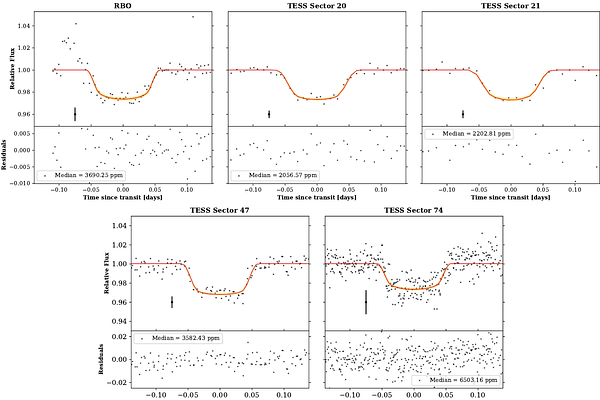Searching for GEMS: Confirmation of TOI-5573b, a Cool, Saturn-like Planet Orbiting An M-dwarf

Searching for GEMS: Confirmation of TOI-5573b, a Cool, Saturn-like Planet Orbiting An M-dwarf
Rachel B Fernandes, Shubham Kanodia, Megan Delamer, Andrew Hotnisky, Te Han, Caleb I Canas, Jessica Libby-Roberts, Varghese Reji, Arvind F Gupta, Jaime A Alvarado-Montes, Chad F Bender, Cullen H Blake, William D Cochran, Zoe L de Beurs, Scott A Diddams, Jiayin Dong, Mark E Everett, Eric B Ford, Samuel Halverson, Jesus Higuera, Henry A Kobulnicky, Daniel M Krolikowski, Alexander Larsen, Andrea SJ Lin, Suvrath Mahadevan, Michael W McElwain, Andrew Monson, Joe P Ninan, Leonardo A Paredes, Yatrik G Patel, Paul Robertson, Gabrielle Ross, Arpita Roy, Christian Schwab, Gudmundur Stefansson, Daniel J Stevens, Andrew M Vanderburg, Jason Wright
AbstractWe present the confirmation of TOI-5573b, a Saturn-sized exoplanet on an 8.79-day orbit around an early M-dwarf (3790 K, 0.59 R$\odot$, 0.61 M$\odot$, 12.30 J mag). TOI-5573b has a mass of $112^{+18}_{-19}$ M$\oplus$ (0.35$\pm$0.06 M$\mathrm{Jup}$) and a radius of $9.75\pm0.47$ R$\oplus$ (0.87$\pm$0.04 R$\mathrm{Jup}$), resulting in a density of $0.66^{+0.16}_{-0.13}$ g cm$^{-3}$, akin to that of Saturn. The planet was initially discovered by TESS and confirmed using a combination of 11 transits from four TESS sectors (20, 21, 47 and 74), ground-based photometry from the Red Buttes Observatory, and high-precision radial velocity data from the Habitable-zone Planet Finder (HPF) and NEID spectrographs, achieving a 5$\sigma$ precision on the planet's mass. TOI-5573b is one of the coolest Saturn-like exoplanets discovered around an M-dwarf, with an equilibrium temperature of $528\pm10$ K, making it a valuable target for atmospheric characterization. Saturn-like exoplanets around M-dwarfs likely form through core accretion, with increased disk opacity slowing gas accretion and limiting their mass. The host star's super-solar metallicity supports core accretion, but uncertainties in M-dwarf metallicity estimates complicate definitive conclusions. Compared to other GEMS (Giant Exoplanets around M-dwarf Stars) orbiting metal-rich stars, TOI-5573b aligns with the observed pattern that giant planets preferentially form around M-dwarfs with super-solar metallicity. Further high-resolution spectroscopic observations are needed to explore the role of stellar metallicity in shaping the formation and properties of giant exoplanets like TOI-5573b.